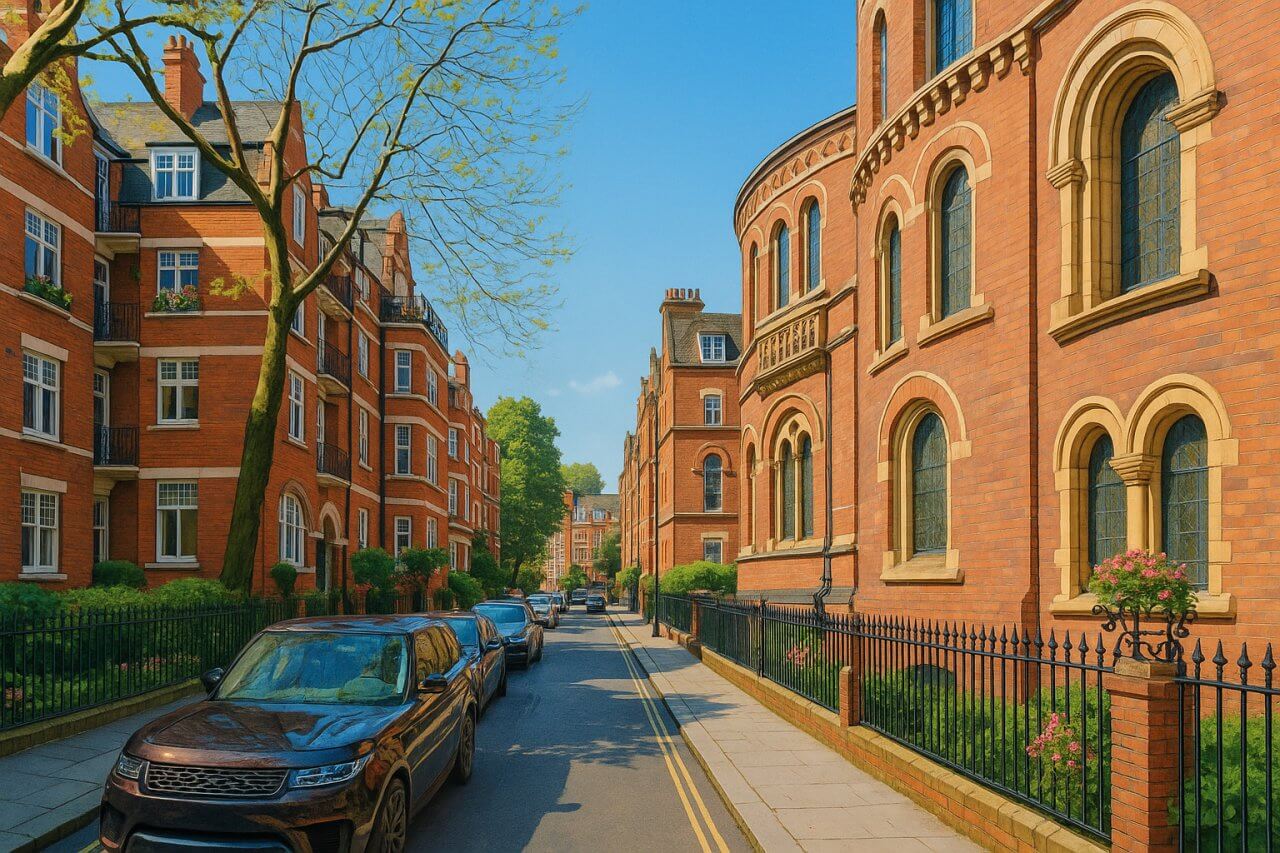
Binney Street, London
Binney Street is a short but elegant thoroughfare in the City of Westminster, running from Brook Street to the south and London’s famed Oxford Street to the north. Set within the heart of Mayfair, this discreet side street exudes the charm and sophistication associated with the district, blending commercial vitality at its northern end with residential and boutique character to the south.
Street Layout and Surroundings
Binney Street is a one way street. Traffic flow begins from the refined Brook Street and travels north for just under 300 metres (approximately 980 feet) before meeting Oxford Street, one of London's busiest shopping avenues. The surrounding streets include Duke Street to the west and Stratford Place just to the east, with Davies Street intersecting nearby. It lies within a dense grid of narrow Mayfair roads lined with a mixture of high-end residences, boutique shops, art galleries, and commercial offices.
The street itself is a blend of older brick-fronted façades and post-war architecture, punctuated by elegant shopfronts and private entrances. The pavements are broad and well-maintained, creating a sense of understated affluence. Much of the foot traffic comes from shoppers exploring the side streets of Oxford Street or professionals working in nearby offices.
Historical Background
Binney Street dates from the early 18th century, part of the grand plan to develop the northern part of Mayfair following the decline of the May Fair which originally gave the area its name. The street was likely laid out during the development boom of the 1720s and 1730s, as aristocratic estates were subdivided and leased for speculative development. Its relatively small scale and straight alignment reflect the urban planning sensibilities of that time.
Origin of the Name
The origin of the name “Binney” is believed to be linked to a person or family of note, although no specific individual has been definitively associated with the naming. It is not uncommon for streets in Mayfair to bear the surnames of aristocratic figures or landowners involved in the development. The name appears on maps from at least the mid-19th century, suggesting its establishment well before that time.
Nearby Attractions and Points of Interest
While Binney Street itself is relatively quiet, its prime location means that some of London’s most iconic destinations are just steps away. Oxford Street’s shopping emporiums, including Selfridges, are at its northern boundary. Brook Street to the south offers several historic townhouses, including the Handel & Hendrix in London museum, a dual-home museum dedicated to composer George Frideric Handel and guitarist Jimi Hendrix.
Nearby Davies Street features fine dining restaurants, art dealers, and luxury hotels, and Grosvenor Square lies just a few minutes to the west, offering one of central London’s largest garden squares.
Real Estate on Binney Street
Property on Binney Street is scarce and highly coveted. As of early 2025, residential flats here sell for approximately £2,000 to £2,800 per square foot, depending on finish and floor level. That equates to roughly £2.15 million to £3 million for a 1,000 sq ft (93 sq m) flat. Rentals are similarly premium, averaging around £1,200–£1,800 per week for well-appointed two-bedroom flats of similar size1.
Most properties here are converted period buildings, with a handful of modernised interiors behind traditional façades. These typically range in size from 800 sq ft (74 sq m) one-bedroom apartments to grand duplexes over 1,500 sq ft (139 sq m).
Transport Links
Nearest London Underground Stations
The closest London Underground stations are Bond Street Station and Marble Arch Station. Bond Street, located just around the corner via Oxford Street and Davies Street, is served by the Central and Jubilee lines, and now also connects to the Elizabeth Line. Marble Arch is also on the Central line and is within a 10-minute walk to the northwest.
Bus Stops
Multiple Transport for London (TfL) bus routes serve Oxford Street, with stops just at the top of Binney Street. Buses heading east and west run frequently and connect to locations across central London, making it easy for visitors to reach this street from almost anywhere in the city.
Fun Fact
Though modest in length, Binney Street played a small role in London’s World War II history. Some of the buildings along the street were used for wartime administrative offices, while nearby Oxford Street endured several bombing raids during the Blitz. Post-war redevelopment efforts have subtly shaped the street’s appearance, blending historic and modern elements in a way that typifies much of London.
Quick Facts
- Location: City of Westminster, Mayfair
- Connects: Oxford Street (north) to Brook Street (south)
- Nearest Tube Stations: Bond Street Station (Central, Jubilee, Elizabeth Line), Marble Arch Station (Central Line)
- Nearby Bus Routes: Multiple Oxford Street services within a short walk
- Historical Development: Early 18th century, part of Mayfair's urban expansion
- Named After: Likely an 18th or 19th-century surname; exact origin unclear
- Nearby Attractions: Selfridges, Brook Street museums, Grosvenor Square
- Residential Prices (2025): £2,000–£2,800 per sq ft (£21,500–£30,000 per sq m)
- Typical Flat Size: 800–1,500 sq ft (74–139 sq m)
- Rental Prices: £1,200–£1,800 per week for 2-bedroom flats
References
Map of Binney Street, London
 Painting of Binney Street, London
Painting of Binney Street, London